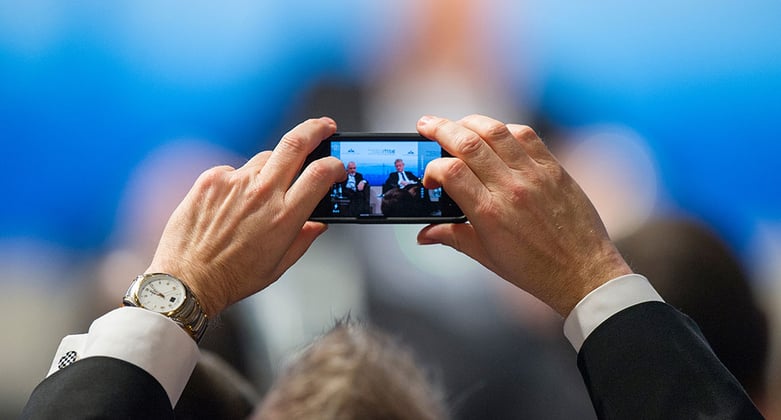People with pacemakers can use iPhones, the Samsung Galaxy, Nokia Lumia, HTC One XL and other popular smartphones, but are advised to keep the devices away from shirt or chest pockets, a study from the European Society of Cardiology said.
The UMHS Endeavour looks at highlights of the study, featured on the U.S. government website MedlinePlus in an article by Mary Elizabeth Dallas and based on information from a European Society of Cardiology news release. This is for the benefit of helping students at American and Caribbean medical schools keep future patients informed about how the popular electronic devices can affect pacemakers.
No Cause for Alarm, But Caution Urged
People with implanted cardiac devices can still use smartphones, but simply need to keep the devices at a “safe distance” from pacemakers and defibrillators in case “signaling interference” might occur.
"Nearly everyone uses smartphones and there is the possibility of interference with a cardiac device if you come too close," said study senior author Christof Kolb, prior head of electrophysiology at the German Heart Centre, in a news release from the European Society of Cardiology (ESC).
Mr. Kolb said people with implanted cardiac devices can still use smartphones, but must be cautious. "That means not storing it in a pocket above the cardiac device. They should also hold their smartphone to the ear opposite to the side of the device implant."
A leading U.S. doctor agreed.
"There is no need for patients to be alarmed," Dr. Marie-Noelle Langan, director of electrophysiology at Icahn School of Medicine at Mount Sinai in New York City, said. “The researchers showed that the potential impact of these devices is quite small.”
According to the European researchers, devices like pacemakers could “misinterpret” electromagnetic interference (EMI) from iPhones or Galaxy phones as “a cardiac signal, which could cause them to stop working,” MedlinePlus wrote.
This might result in people fainting. Another possibility is a cardiac device misinterpreting interference from a Galaxy or iPhone as a “life-threatening” abnormal heart rhythm. Patients could experience a shock that would be painful, MedlinePlus said.
FDA’s Outdated Warning
The U.S. Food and Drug Administration (FDA) recommends that cellphones be kept “at least five to seven inches away from an implanted cardiac device,” and MedLinePlus says the study team pointed out that this warning is based on outdated research established before the era of smartphones. In addition, mobile network standards have changed in the past decade, the team noted.
Researchers tracked smartphone effects on more than 300 patients with implanted cardiac devices. Study participants were exposed to the electromagnetic field of the popular smartphones Samsung Galaxy 3, Nokia Lumia and HTC One XL.
"From earlier studies we know that the most vulnerable phases of a call are ringing and connecting to the network, not talking, so it was important to analyze these separately," study lead author Dr. Carsten Lennerz, a cardiology resident at the German Heart Centre in Munich, was quoted as saying in a European Society of Cardiology news release.
The study was presented earlier this month at the joint meeting of the European Hearth Rhythm Association of the European Society of Cardiology and Cardiostim in Milan, Italy. The research will be considered preliminary until it is published in a peer-reviewed medical journal.
(Top photo) SMARTPHONES IN SHIRT POCKETS CAN BE DANGEROUS: For people with implanted cardiac devices, putting a smartphone in a shirt pocket could have serious consequences, a new medical study says. Photo: www.securityconference.de/Wikimedia Commons
About UMHS:
Built in the tradition of the best US universities, the University of Medicine and Health Sciences focuses on individual student attention, maintaining small class sizes and recruiting high-quality faculty. We call this unique approach, “personalized medical education,” and it’s what has led to our unprecedented 96% student retention rate, and outstanding residency placements across the US and Canada. UMHS is challenging everything you thought you knew about Caribbean medical schools.

Scott is Director of Digital Content & Alumni Communications Liaison at UMHS and editor of the UMHS Endeavour blog. When he's not writing about UMHS students, faculty, events, public health, alumni and UMHS research, he writes and edits Broadway theater reviews for a website he publishes in New York City, StageZine.com.















